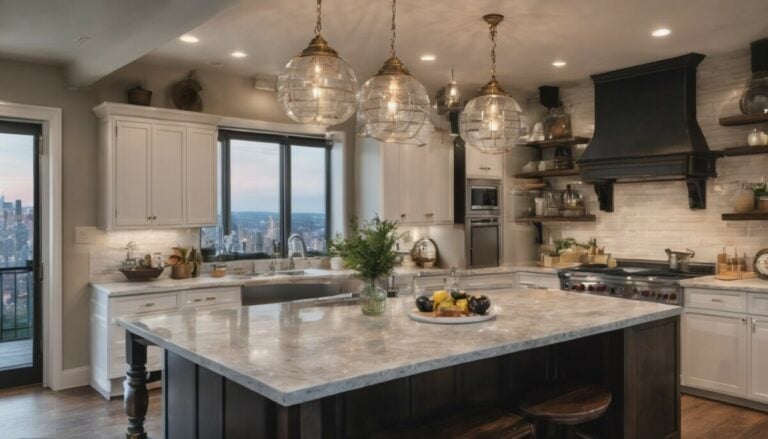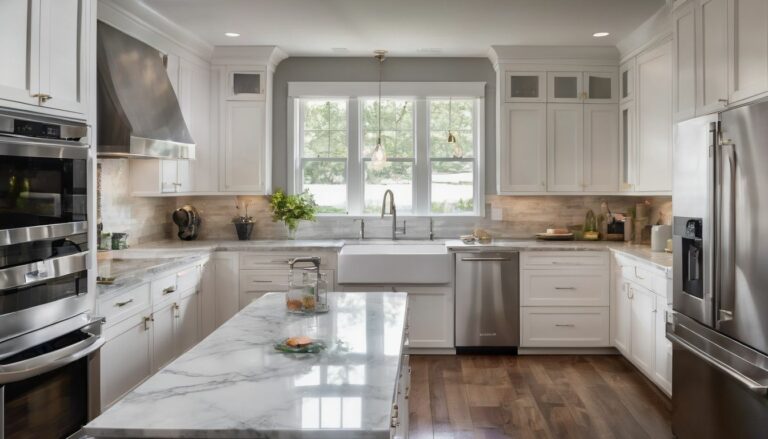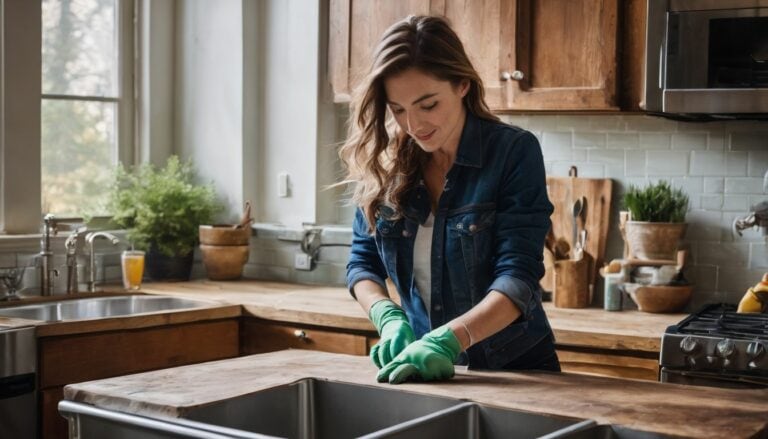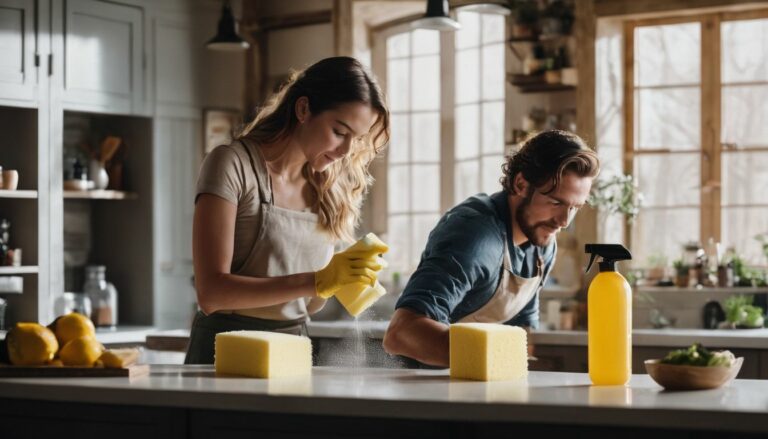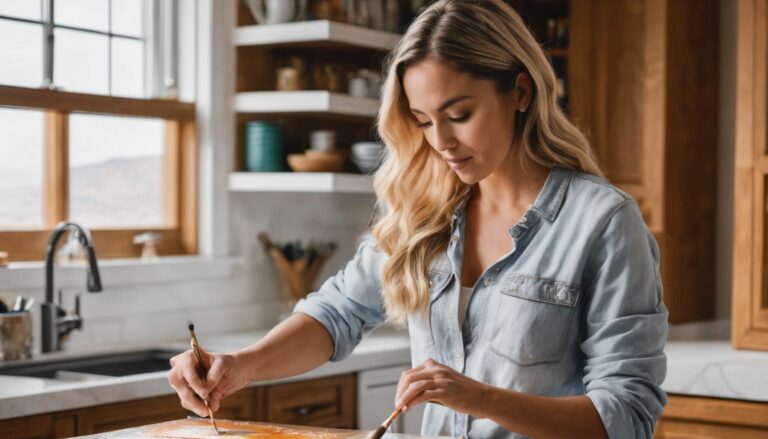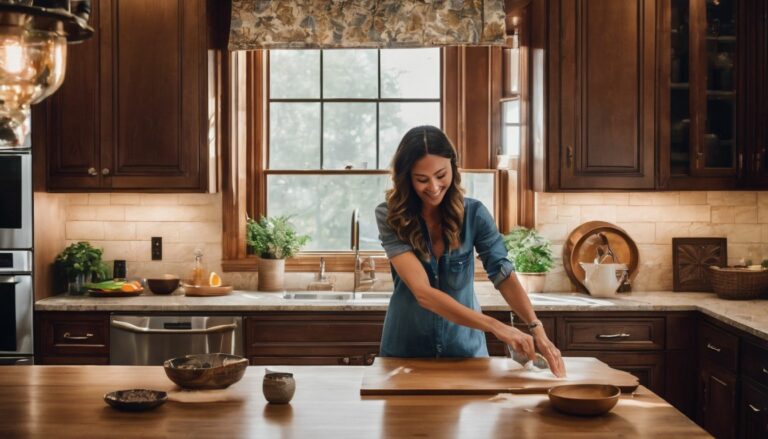How Long Does Whitewash Actually Last on Wood? Find Out Here!
Wondering how long that fresh, bright look of whitewashed wood will grace your space? Whitewashing can protect and beautify your wood for up to 20-30 years. This article guides you through the what, why, and how of maintaining that pristine white charm on wooden surfaces.
Dive in to make it last!
Defining Whitewashing Wood
Whitewashing wood creates a charming, vintage look that lets the natural wood grain peek through. This technique involves a special whitewashing mixture, which usually includes water-based paint or sometimes lime wash.
The mix is brushed onto wooden surfaces to give them a matte finish that looks worn and rustic. Fireplaces, flooring, and furniture can all be transformed with this method for an airy and light feel in any space.
People often choose to whitewash wood for its ability to brighten up dark rooms like basements or enhance spaces with poor lighting. It works best on porous surfaces where it can sink in and show off the texture of the material.
With its simple yet striking effect, whitewashing allows you to preserve the beauty of your wood while adding a fresh twist to your home’s interior design.
Understanding the Durability of Whitewash on Wood
When it comes to adding a rustic charm to wood, whitewash is a classic choice – but just how resilient is this stylish finish? Let’s dive into the nitty-gritty of whitewash longevity and uncover what determines its staying power on your favorite wooden surfaces.
Longevity Indoors
Whitewash on wood can transform a room, giving it a bright and spacious feel. It’s not just about looks though; this treatment also acts as a protector for your indoor wooden surfaces.
Imagine applying whitewash to your favorite pieces of furniture or even your hardwood floors. With proper application, you’re looking at an impressive lifespan—whitewash endures up to 20 or 30 years indoors!
Care for it is minimal, which makes whitewashing a smart choice if you love hassle-free maintenance. Plus, one gallon goes the distance when compared to other paint colors and finishes.
You’ll save money in the long run while keeping that timeless rustic look fresh and clean year after year.
Longevity Outdoors
Outside, your whitewashed wood faces the sun, rain, and wind every day. This means it won’t last as long as it does inside. Usually, a good whitewash job can keep your outdoor furniture looking fresh for a few years.
To help it survive even longer, apply a sealer after the whitewash dries. This protects the wood from moisture and UV rays.
Taking care of your outdoor furniture is key to making that whitewash stick around. Regular cleaning helps prevent dirt build-up that can wear down the finish faster. Also, consider placing items in spots with less direct sunlight or under cover during harsh weather—it makes all the difference!
Factors that Influence Whitewash Durability
When it comes to ensuring your whitewashed wood stands the test of time, a few key factors come into play. It’s not just about slapping on that mixture and calling it a day—you’ve got to consider elements from how you apply it to what measures you take after the fact; think defense strategy for your chic, rustic charm.
Quality of Application
Applying whitewash to wood needs care and attention to detail. A well-done job can make your whitewashed surfaces last for decades—up to 20 or even 30 years without much fuss. It’s vital to use the right mixture and apply it evenly across the wood.
Thick coats may crack while too thin ones won’t give you that dreamy, rustic look you’re aiming for.
Make sure the wood is clean before starting. Dust, dirt, or grease will keep the whitewash from sticking properly. Use long, smooth strokes with a brush or cloth to spread the mixture well into every nook and cranny of your wooden surface.
Skimping on this step could mean your good-looking finish peeling off sooner than you’d like!
Protective Measures
To keep your whitewashed wood looking fresh, certain steps help. Use a sealer after whitewashing to lock in the color and protect the surface. This clear topcoat shields against scratches and weather damage.
For outdoor projects like sheds or fences, choose a sealer designed for exterior use. It fights off harsh sunlight and heavy rain.
Indoor whitewashed pieces benefit from regular dusting and gentle cleaning with soft cloths. Avoid harsh chemicals that can strip away the finish. Seal all cracks around windows and doors to prevent moisture buildup; mold loves dampness! Installing dehumidifiers helps too, especially in areas like bathrooms where steam is common.
Your HVAC system also plays a part—make sure it’s up to date with routine maintenance checks for optimal air flow and temperature control, keeping your whitewashed wood pristine.
Wood Type
Different types of wood offer varying levels of durability and resistance to elements when used for whitewashing. Pine, with its natural light color and smooth grain, is often a popular choice for achieving a rustic yet bright aesthetic.
However, oak provides robustness due to its dense nature, making it ideal for high-traffic areas or outdoor furniture.
For those seeking an eco-friendly option, reclaimed wood serves as an excellent candidate for whitewashing projects. It not only brings unique character and history but also contributes to sustainability efforts.
Exotic woods like bamboo can infuse a modern twist into spaces while benefiting from the quick-growing nature of this renewable resource.
The condition of the wood further influences the longevity and finish quality of whitewash applications. Newer wood tends to absorb paint more effectively than aged lumber that may have developed oils or residues on the surface over time.
Ultimately, choosing the right type of wood hinges on intended use, desired appearance, climate factors if used outdoors, budget constraints, and personal preference in aesthetics.
Negative Effects of Whitewashing Wood
Whitewashing may lead to wood swelling or warping if moisture seeps in. This happens because whitewash doesn’t seal the wood like other finishes. Without a proper seal, water can get into the wood and cause it to change shape.
The whitewash might also hide the beautiful natural grain of the wood. Some people love seeing the knots and lines in their wooden pieces, but whitewashing covers them up.
Another downside is that whitewashed surfaces can show dirt and stains more easily than darker woods or sealed finishes. Touch-ups might be needed often to keep everything looking clean and bright.
This means you’ll spend more time maintaining your whitewashed furniture or floors than you would with other types of finishes.
Comparison: Whitewash vs. Limewash
While considering the effects of whitewashing wood, it’s essential to compare it with limewash—a similar yet distinct technique. Both methods offer unique results and longevity for treated wood, making understanding their differences crucial for choosing the right approach for your project. Below is an insightful comparison of whitewash versus limewash, presented in a clear and concise table format.
| Aspect | Whitewash | Limewash |
|---|---|---|
| Composition | A mixture of water, lime, and other natural pigments | Hydrated lime mixed with water and natural pigments |
| Application | Often applied with a brush for a textured finish | Typically brushed on, resulting in a more consistent and less textured appearance |
| Durability Indoors | Can last 20-30 years with minimal maintenance | Requires refreshing every 5-7 years |
| Durability Outdoors | Weather conditions can reduce longevity; requires protective sealant | Better suited to withstand outdoor elements without a sealant |
| Finish | Provides a matte, slightly translucent finish that exposes wood grain | Offers a matte, opaque finish that can cover wood grain |
| Historical Use | Traditionally used for its aesthetic appeal and ease of application | Dates back to Roman times, used for protective and hygienic properties |
| Environmental Impact | Low toxicity, eco-friendly; lime is a natural, breathable material | Also low toxicity and environmentally gentle; lime has antibacterial qualities |
| Maintenance | Simple to clean with soap and water; touch-ups are straightforward | May require periodic reapplication to maintain appearance and protection |
| Protection | Acts as a mild antiseptic; helps in preventing mold | High pH of lime provides natural protection against fungi and bacteria |
Delving into the subtleties of each method, you’ll notice that whitewash and limewash both harbor their own aesthetic and protective qualities. The choice between these two options hinges on the specific look you want to achieve and the durability you require. Whether indoors or out, understanding these nuances will ensure your wood surfaces are both beautiful and enduring.
Common Mistakes to Avoid for Long-lasting Whitewash
Whitewash and limewash both offer unique benefits, but proper application is key for longevity. Here’s how to keep your whitewash looking great for years.
- Rushing the Drying Process – Whitewash needs time to dry completely before it’s exposed to elements or touched. Allow it ample time to set in order to prevent peeling or flaking.
- Confusing Painting with Staining – Apply whitewash like a stain, working it into the wood grain instead of layering it on top like paint. This ensures better absorption and durability.
- Skipping Surface Prep – Cleaning the wood thoroughly before starting and sanding off any old finishes are crucial steps for whitewash adherence.
- Ignoring Protective Sealants – After whitewashing, sealing the wood can greatly extend the life of your project by guarding against moisture and wear.
- Neglecting Quality Brushes – Invest in high-quality brushes that won’t shed bristles; this ensures a smooth application and helps avoid unsightly brush marks.
- Forgetting Weather Conditions – If you’re working outside, pick a day that’s dry and mild since too much sun or moisture can ruin fresh whitewash.
- Choosing the Wrong Paints – Use paints intended for whitewashing, such as lime-based ones or specific blends that mimic traditional formulas for best results.
- Overlooking Wood Types – Different woods absorb whitewash differently; test an inconspicuous area first to see how your chosen wood reacts with the wash.
- Missing Regular Maintenance – Keep an eye on your whitewashed surfaces and touch them up as needed, especially if they’re exposed to harsh conditions frequently.
Conclusion
Whitewashed wood shines for decades with the right care. Inside, it keeps your rooms looking fresh for years; outside, it stands strong against the sun and rain. Remember, proper application is key—do it well, and enjoy a timeless charm that lasts up to 30 years.
Choose whitewash to give your wood a durable, low-maintenance finish that stays stunning year after year.
To learn more about potential drawbacks, read our detailed article on the negative effects of whitewashing wood.
FAQs
1. What exactly is whitewash, and how does it work on wood?
Whitewash, made from a mix of crushed limestone and water, creates an off-white finish that lets the natural grain of the wood show through—think lime-washed charm on fences or cozy attic beams.
2. How long can I expect my whitewashed wood to look great?
A well-applied whitewashing job with lime-wash can last up to five years before it might need a touch-up; just right for giving your space that timeless feel without constant upkeep.
3. Will adding latex paint affect my whitewash’s lifespan?
Yes indeed! Mix in some acrylic or latex paint with your lime mixture and you’re looking at a more durable finish—expect anywhere from seven to ten years of fresh-looking wood surfaces.
4. Are there special care tips for maintaining my limewashing work?
Keep your limewashed woods happy by cleaning gently—forget hot water blasts or harsh chemicals—and if they’re outdoors, watch out for weather wear; quick fixes can extend their radiant looks!
5. Does where I live play into how long my white wash lasts?
Absolutely – humid spots like crawl spaces shorten its life, while wood in dry attics might hold onto that lovely limewashing even longer due to better insulation and less exposure to the elements.
6. Can anything else shorten the life of my whitened wooden surfaces?
Watch out around kitchen appliances, stoves, and heating areas—heat sources can speed up the fading process of your dreamy white finishes on siding or chic stucco walls.


